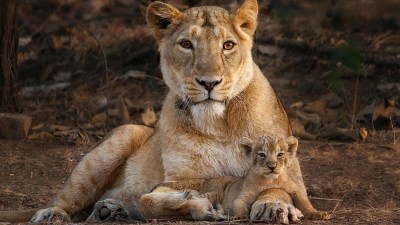US lost 22% of its butterflies over past 2 decades: What makes this data ‘catastrophic’?
“Butterflies have been declining the last 20 years,” said study co-author Nick Haddad, an entomologist at Michigan State University. “And we don’t see any sign that that’s going to end.”
 US officials plan to put the monarch butterfly on threatened list. (Reuters)
US officials plan to put the monarch butterfly on threatened list. (Reuters)A new study has found that America’s butterflies are disappearing because of insecticides, climate change and habitat loss, with the number of winged beauties down 22% since 2000.
“Butterflies have been declining the last 20 years,” said study co-author Nick Haddad, an entomologist at Michigan State University. “And we don’t see any sign that that’s going to end.”
‘Catastrophic’ findings
The first countrywide systematic analysis of butterfly abundance found that the number of butterflies in the Lower 48 states (minus Alaska and Hawaii) has been falling on average 1.3% a year since the turn of the century. The study was published in Science on Thursday (‘Rapid butterfly declines across the United States during the 21st century’).
Scientists combined 76,957 surveys from 35 monitoring programs and counted 12.6 million butterflies over the decades. Last month, an annual survey that looked just at monarch butterflies, which federal officials plan to put on the threatened species list, counted a nearly all-time low of fewer than 10,000 — down from 1.2 million in 1997.
Many of the species in decline fell by 40% or more. David Wagner, a University of Connecticut entomologist who wasn’t part of the study, said the data may not seem alarming outrightly but is “catastrophic and saddening” when compounded over time. “In just 30 or 40 years we are talking about losing half the butterflies (and other insect life) over a continent!” Wagner said.
Warning sign for humans
Cornell University butterfly expert Anurag Agrawal said he worries most about the future of a different species: humans. “The loss of butterflies, parrots and porpoises is undoubtedly a bad sign for us, the ecosystems we need and the nature we enjoy,” Agrawal, who wasn’t part of the study, said in an email.
“They are telling us that our continent’s health is not doing so well… Butterflies are an ambassador for nature’s beauty, fragility and the interdependence of species. They have something to teach us.” What’s happening to butterflies in the United States is probably happening to other, less-studied insects across the continent and world, Wagner said. Butterflies are also pollinators for crops such as cotton.
Human hand
The study also found that the driest and warmest areas are the worst for butterflies. The biggest decrease in butterflies was in the Southwest, where the number of butterflies dropped by more than half in the 20 years.
When they looked at butterfly species that lived both in the hotter South and cooler North, the ones that did better were in the cooler areas. Climate change, habitat loss and insecticides tend to work together to weaken butterfly populations, Edwards and Haddad said.
Of the three, it seems that insecticides are the biggest cause, based on previous research, Haddad said. “It makes sense because insecticide use has changed in dramatic ways in the time since our study started,” Haddad said.
The silver lining is that habitats can be restored and so can butterflies.
“You can make changes in your backyard and in your neighborhood and in your state,” Haddad said, adding that simply doing this “could really improve the situation for a lot of species.”
- 01
- 02
- 03
- 04
- 05






































